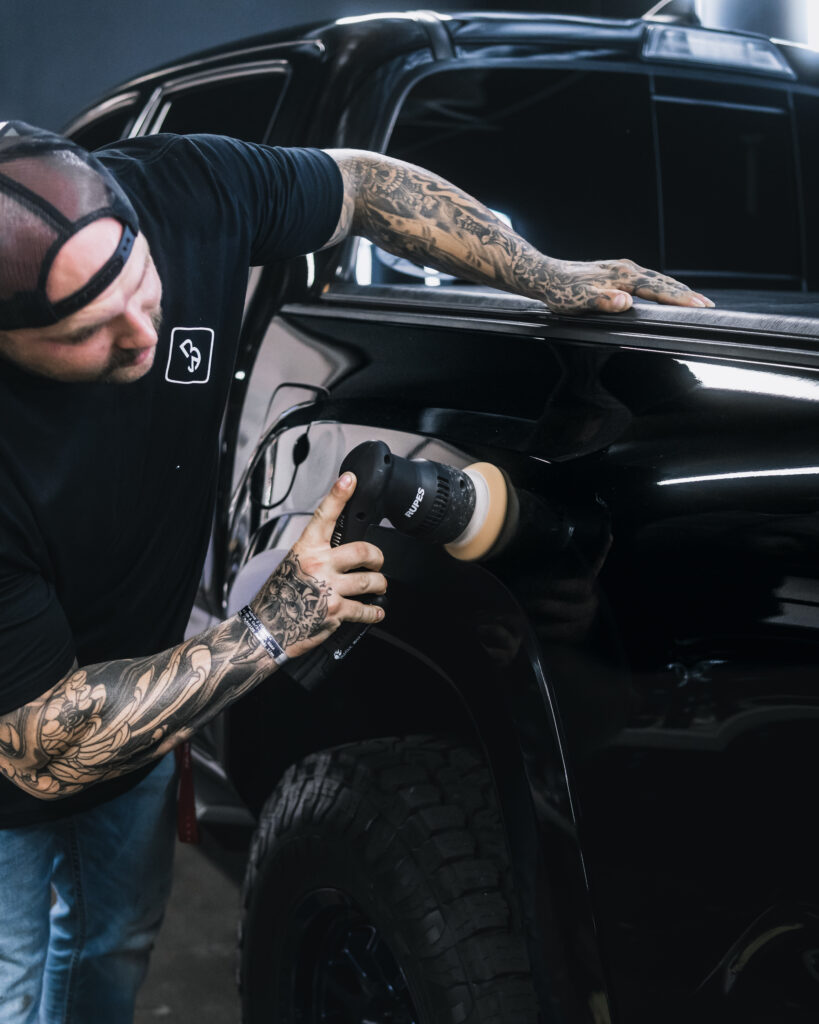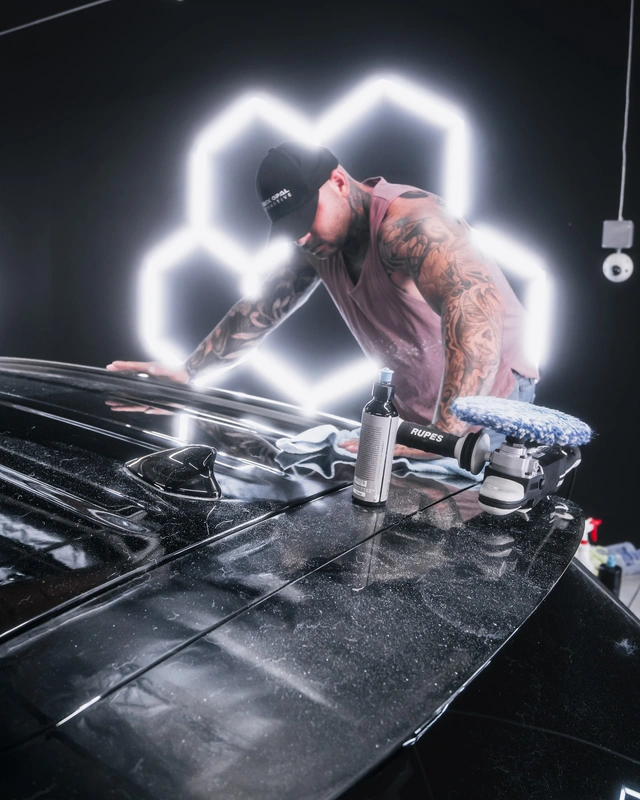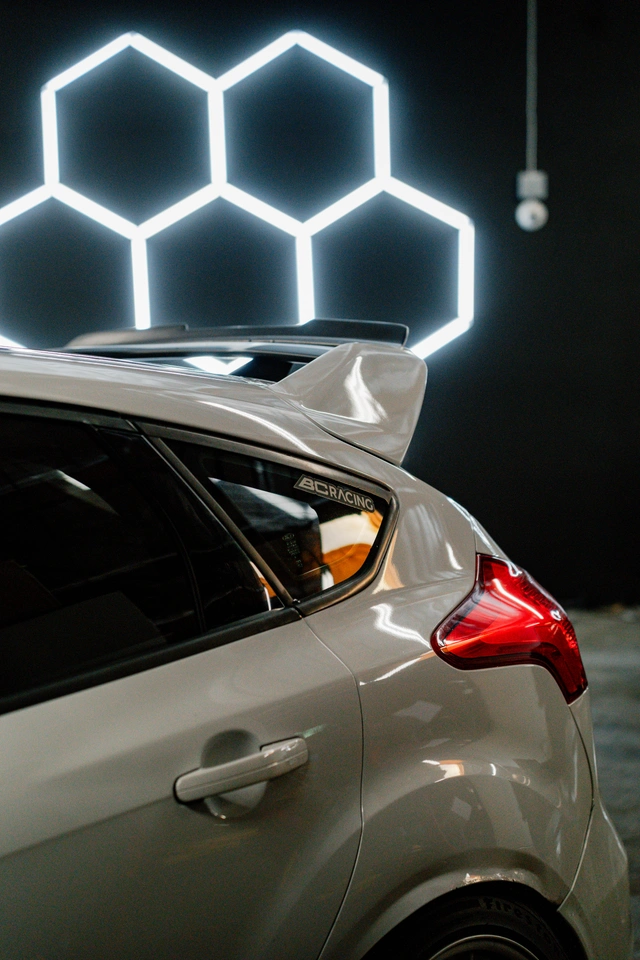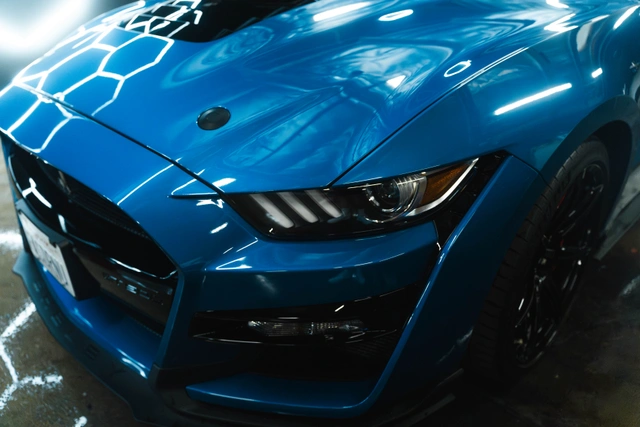If you’ve ever glanced at your car and noticed those pesky swirl marks, scratches, and etched water marks, you’re not alone. Let’s talk paint correction—the process that gets rid of these imperfections for a smoother, shinier finish. But what exactly is paint correction, and why should you care? Let’s dive in.
What is Paint Correction?
Paint correction is all about restoring your car’s paintwork by removing surface imperfections. It involves carefully removing a very thin layer of the clear coat to smooth out scratches and swirls, revealing a pristine layer underneath.
Microns and Clear Coat: The Fine Details
To give you an idea, we’re talking about measuring and removing clear coat at the micron level — that’s one-thousandth of a millimeter. This precision ensures we don’t overdo it, keeping your car’s paint job intact and looking great.
The Differences: 1-Step, 2-Step, and 3-Step Correction
Paint correction isn’t a one-size-fits-all process. It can be tailored to your car’s specific needs, and your budget.
1-Step Correction
- What it is: A more basic form of paint correction
- Best For: Minor imperfections or a quick refresh
- The Process: Uses a polish to eliminate light swirls and small surface marks, giving your car a cleaner, more refined look.
2-Step Correction
- What it is: A more comprehensive approach
- Best For: Moderate scratches and imperfections
- The Process: Involves using a compound first to tackle deeper swirls, followed by a polish to refine the surface.
3-Step Correction
- What it is: The most thorough paint correction method
- Best for: Heavily scratched vehicles
- The Process: Combines an aggressive compound, a milder polish, and a fine polish to achieve a practically flawless finish.
What Causes Swirl Marks?
Understanding what causes these imperfections can help prevent them in the first place. Here are some common culprits:
Automatic Car Washes
While they’re convenient, automatic car washes often use brushes and cloths that trap rocks and dirt. The trapped contaminants then get dragged across your car’s surface, creating swirl marks.
Improper Washing Techniques
Using the wrong tools or techniques can easily cause scratches. Common mistakes include:
Using dirty sponges or towels: Dirt particles trapped in these can scratch your car’s surface
Not using the two-bucket method: This method uses one bucket for soapy water and another for rinsing your wash mitt, preventing dirt from being reapplied to the car
Drying with rough towels: Old or rough towels can leave marks. Always use a soft, clean microfiber towel
Other Causes
- Neglected Maintenance: Letting dirt, sap, or bird droppings sit on the paint for too long can cause damage when removed
- Poor Polishing or Waxing Techniques: Using aggressive compounds or improper tools can cause more harm than good
Protecting Your Car Post-Correction
Once your car’s paint correction is complete, it’s crucial to protect that fresh surface. Protecting your car’s paint will help maintain the work done and keep your car looking new.
Recommended Protections:
- Ceramic Coating: Provides a durable shield against contaminants, UV rays, and oxidation
- Paint Protection Film (PPF): Offers strong protections against physical damage like rock chips and scratches
- Wax: At the very least, apply a good quality wax to maintain the correction and enhance the finish
Why Protect?
Investing in protection safeguards your car’s appearance and value, making it look better for longer and saving you money on future repairs.
Wrapping Up
Whether you’re a busy parent, proud owner of a luxury car, or a business managing a fleet, paint correction can make a big difference. It’s more than just a cosmetic fix; it’s an investment in your car’s future. Next time you spot those little imperfections, remember: paint correction can help. And don’t forget to protect that newly corrected surface to keep your car looking its best for years to come.




